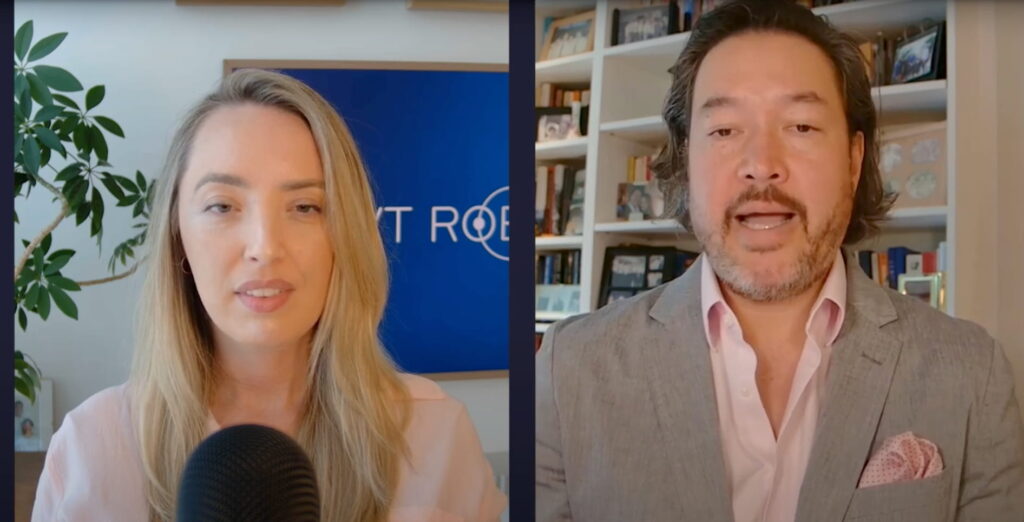Why Digitize your Warehouse Operations

In this conversation, Chloë Lind interviews Guy Courtin, Vice President of Industry and Alliances at Tecsys. The conversation goes deep into the challenges and pressures businesses face when considering automation and how to digitize your warehouse operations. There’s a clear recognition of the gap between what’s often showcased in the tech world and the reality of implementation and integration within individual businesses.
Chloë: Hi, and welcome to Automation Unpack Tales from the Warehouse where we aim to support, guide, and inspire you on your path to automate your warehouse facilities. Today. I’m so pleased to be joined by Guy Courtin who is somebody that comes to us with an extensive career in the supply chain industry, having been in roles on the research side of the house as an analyst, as well as OEM providers, ERPs, and now as VP of Industry and Advanced Technology at Tecsys.
Guy: Thanks Chloe and a plus for pronunciation of my name your French classes have paid off.
Chloë: Thank you so much. Alright. We’re so excited to have you. You’re everywhere. Your face pops up everywhere. So I feel so lucky that you’re able to join us today and really excited to talk about what’s going on over at Tecsys, what you’re seeing in the market. And what automation is looking like today. So last week Nick Leonard, who is our SVP of product at SVT, who you know well, I know you’ve been at the Experience Center in Norfolk. Yep. He published a piece in Supply and Demand Chain Executive last week, and he talks about how in general automation begins with the same problem statement, which is a lack of data, of data digitization. And that’s so critical. To be able to execute automation in warehouse facilities, right? So, he talks about how the vast majority of warehouses may still be paper-based, actually maybe going off of Excel, for example, to track inventory and how, because of this, introducing a warehouse management system is such a great step and builds that sort of digital foundation that enables companies to then go in and optimize the execution side of the house.
Chloë: I’d love to dive into the significance of a robust digital foundation in warehouse automation. How does Tecsys approach this with WMS?
Guy: No. Absolutely. And first, thanks so much, Chloe, for having me on this. I always enjoy these conversations, so I think, yeah, I think that’s a really interesting point you bring up because I think a lot of times we forget in the industry that there’s a foundational need when it comes to advanced technologies, which is sort of a baseline, right? Digitization. I know that term gets thrown around a lot and it certainly has been the past 10, 15, 20 years. And now we sort of leapfrog and just talked automation with forgetting in a way that you need to have a good foundational base in your warehouse, in your supply chain, in your fulfillment network around your digital assets.
Guy: And what do we mean by that? Yeah. The bottom line is this, is that you need some kind of system of record that is going to be able to give you that insight of what is happening in your warehouse, what is happening in your fulfillment network, what’s happening in your supply chain. But if we focus specifically on the warehouse, that of course comes back down to good old-fashioned warehouse management solution, right? WMS which is gonna act as that repository of digital. That digital twin, if you will, of what’s happening in the warehouse. Everything from the most important of course.
Chloë: Absolutely. That makes total sense. And. Could you walk me through some of the factors that folks should consider when they’re looking for a WMS that’s a good fit for their business?
Guy: I. It is a great question and, and you know, I’m kind of tongue in cheek here, right? People would say, well, just go to the Gartner Magic Quadrant and look who’s in there. And I’d say that’s a good document to at least get a sense of who’s in the market. But the reality is this, there’s a lot of great WMS’ vendors out there, ourselves included.
Guy: And yes, we are in the Magic Quadrant, but I would say for anybody you know, look first and foremost, What kind of warehouse do you have, right? Is it, is it a level one, level two, or level five? How complicated? How many warehouses do you have? Are you looking at one warehouse or a network of warehouses? Look at your SKU count, right? How many SKUs what’s your inventory mix look like? How much inventory are you carrying? What’s the speed by which you’re moving inventory in and outta your warehouse? That’s gonna determine the complexity of the warehouse warehouses. That you’re looking to manage.
Guy: And that should then give you a sense of, okay, what kind of WMS system do I need to look for? Because while all WMS systems at some level are gonna do the basics, right, receiving, picking, put away, cycle counting, right? All the things that we know warehouse 101 you need to do, the difference becomes right. Sort of the 80 20 rule, all of us can do that. 80%. Which one of us do that? 20%. That’s relevant to you.
Guy: So what do we, what do I mean by that? You know, it’s interesting. At Tecsys we do, one of, one of the industries we focus on is healthcare. And we have a lot of success in the healthcare space working with independent distribution networks, hospitals, and their warehouses. And what we have found is that some of the work we’ve done and some of the adjustments we’ve made to our WMS are specific to that industry.
Guy: So yes, you might be a hospital network. You’re looking for a warehouse management solution, and you look and you say, oh company X has a, has a good WMS, and they go talk to them. But then you realize, yeah, they’re really good at 3PL. They’re not really good at healthcare. Maybe I shouldn’t focus so much on that and look for one that has that healthcare bend, if you will. So my advice to folks, Chloe, is really do your, do do your homework. There’s a lot of great solutions out there, big, small, and medium.
Chloë: Yeah, not at all. And I think that’s where, to your point, like having a vision and thinking through these different scenarios, right?
Chloë: Yep, yep. Exactly. And perhaps the more realistic and lower risk approach is to take the micro deployment route, learn, iterate, get feedback, have everyone on board so they’re bought in. Helps with people management.
And a lot of people don’t even have a WMS. Many are on legacy systems, certain constraints or challenges there, and might be on the path to upgrades.
And then there’s pressure to automate. If I wait until past peak, upgrade the system, and then automate, it ends up delaying the automation deployment. SVT helps with timing, accelerates the path to automation.
I’d love to talk about a customer we share, where we deployed a leading AMR and connected it with Tecsys, a legacy system, without delaying automation.
In this scenario, we used a flat file and adapted while the customer is planning the upgrade. We met them where they’re at, keeping paths of innovation moving.
Guy: That’s a great example, Chloë. We’re at the will of our customers, a tool our customers use. We don’t want to slow down their adoption of other tools. The ability to bring onboard a robotic solution to integrate with our WMS.
Part of the value working with SVT is creating that bridge and linking it to newer versions. We’re baking hooks and actions for modern automation. Our WMS is more automation-ready.
Chloë: There wasn’t demand for that kind of capability at the time.
Guy: Right, we’ve worked with robots and automation systems only recently. Having a latest version of WMS could encourage looking at automation.
Chloë: Change can be intimidating; it’s outdated right after implementation.
Guy: Tech keeps evolving even as it’s installed. It’s a leap of faith to start trying it and iterating on it. Despite its claims, no tech is perfect. It’s still a tool.
Chloë: It’s critical to have flexibility in integration, scale and adapt as APIs change. It minimizes risk at the end.
Guy: Connectivity is crucial for communication between systems, a complicated but crucial part. Without proper integration, technology might not work as expected.
Chloë: The Tecsys Elite SOFTBOT connector we partnered on is important for integration and enables seamless communication.
Guy: It’s understanding customer needs, asking about robots, and filling the gap of how WMS connects to them. It’s commercially ready to integrate. We’re ready when customers want robotics.
Chloë: Change is hard, it’s all about de-risking.
Guy: It’s removing as much risk as possible. We don’t have all the answers, but we’re exploring, discussing, and solving issues as they arise.
Watch the SOFTBOT Platform demo of Tecsys integrating with AMRs here.
This interview has been edited for length and clarity. Please listen or watch the episode to catch the entire conversation.
